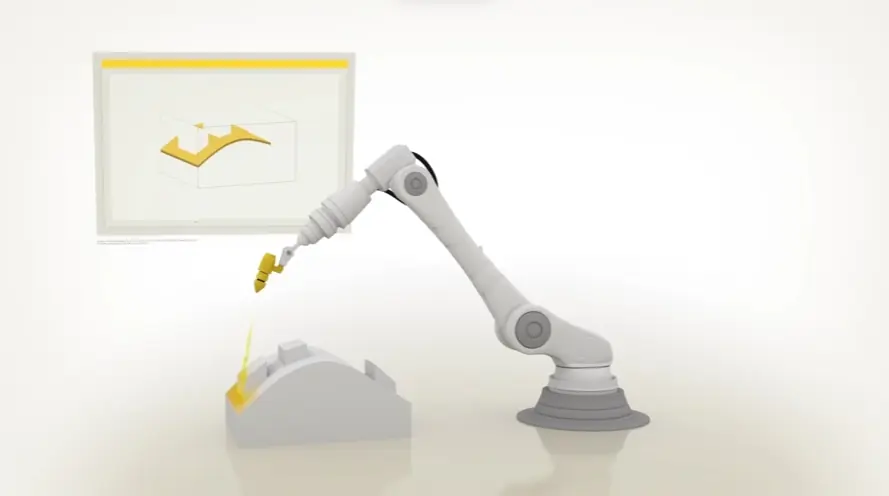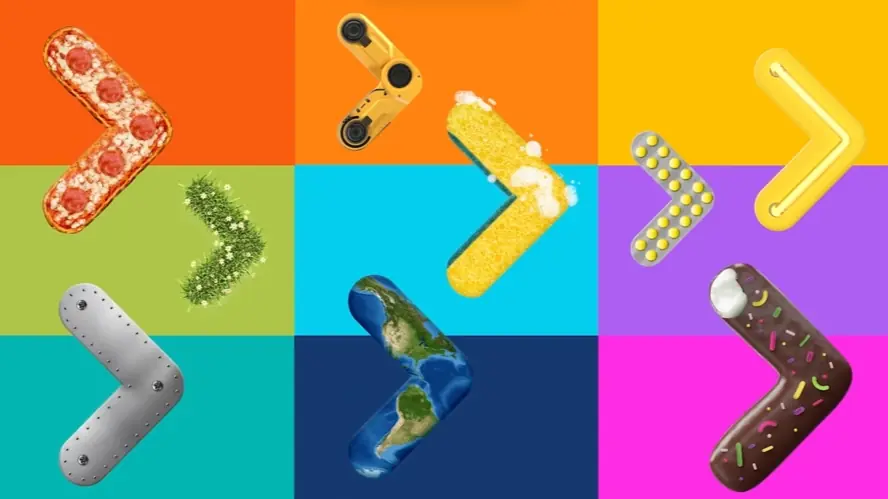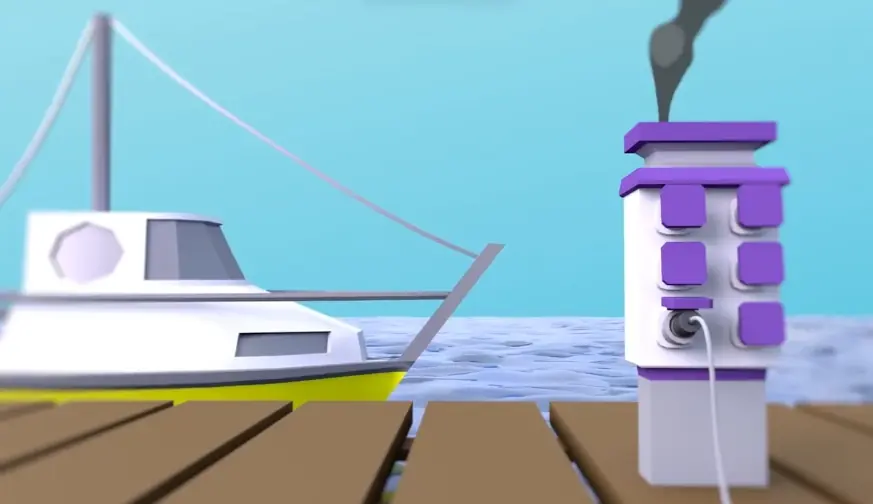
How can 3D animation improve customer understanding?
Animation clarifies complex subjects, improving understanding and memory retention through dynamic visuals.
What components are essential for a successful 3D how-to video?
Essential components include a clear script, detailed storyboard, accurate models, engaging animation, professional voiceover, and suitable music.
How do I develop a compelling script and storyboard for a 3D how-to video?
Develop a compelling script by focusing on the user's needs and the product's functionality. Storyboards should visually represent each step.
Which 3D animation style best suits my brand and audience?
The best animation style depends on the brand and target audience. Consider factors like realism, stylization, and overall tone.
How does 3D enhance clarity compared to 2D explainer videos?
3D adds depth, interactivity, and detailed views, enhancing clarity compared to 2D by showcasing functionality and complex processes.
What are the critical pre-production stages for a 3D how-to video?
Critical pre-production stages include needs analysis, conceptualization, script development, storyboarding, technical planning, and asset gathering.
How can 3D visually represent complex technical processes?
Complex technical processes can be visualized through animated breakdowns, cutaways, exploded views, and clear annotations.
How can 3D showcase unique product features effectively?
Unique product features can be showcased effectively through close-ups, dynamic camera movements, and highlighted functionalities.
How can a 3D animated tutorial improve lead generation?
An animated tutorial can improve lead generation by demonstrating product value, engaging potential customers, and including clear calls to action.
How are other companies using 3D how-to videos for marketing?
Companies use how-to videos for product demonstrations, onboarding, training, and marketing to increase engagement and drive sales.
How can a 3D product demo enhance my sales funnel?
A product demo enhances the sales funnel by showcasing benefits, addressing customer pain points, and encouraging conversions.
How can I use 3D animation for specific marketing objectives?
3D animation can be used for various marketing objectives, including brand awareness, lead generation, product education, and sales conversions.
How can I adapt existing materials into a 3D how-to video script?
Existing materials like user manuals or presentations can be adapted into engaging scripts and storyboards for how-to videos.
How can a 3D video simplify a complicated technical concept?
A 3D video simplifies complicated concepts by visualizing abstract ideas, making them easier to understand and remember.
How can 3D animation highlight my product's unique selling proposition?
Animation highlights a product's unique selling proposition through dynamic visuals, emphasizing key features and benefits. Pricing for a 60-second video ranges from $1000-$6000, depending on complexity, with typical turnaround times of 3-8 weeks.
Mastering Visual Storytelling in 3D How-To
Beyond simply demonstrating steps, mastering visual storytelling in a 3D Animated How-To Video involves crafting a sensory experience that deepens viewer engagement and understanding. We make the invisible visible, allowing audiences to grasp complex internal workings or processes that static visuals cannot convey. This often involves technical visualizations that dissect machinery or simulate procedures, unlocking deeper comprehension.
Visual fidelity plays a crucial role, not just for aesthetics but for credibility. Smooth playback is paramount, which hinges on diligent performance optimization, streamlining models and textures to ensure a fluid experience without jarring pauses. Realistic materials and efficient texture mapping ground the visuals in reality, making products or environments believable and enhancing the overall instructional impact. Strategic lighting further guides the viewer's eye, emphasizing critical areas and reinforcing visual hierarchy.
Bringing actions to life requires nuanced character animation, conveying not just movement but also intent and interaction with the subject. This can involve expressive actions or even detailed facial animation and lip sync where characters are present, building connection and clarifying spoken instructions. Guiding the viewer's eye effectively utilizes strategic camera angles, shifting perspective through close-ups or point-of-view shots to highlight key steps or demonstrate usage from a relatable perspective.
Revealing intricate details through visuals like exploded views or dynamic simulations helps viewers grasp mechanics impossible to show otherwise.
Skilled animation makes processes feel natural, using timing and spacing to communicate weight and flow, aiding retention.
Designing camera movements and angles specifically emphasizes steps, ensuring the viewer focuses on the most important action or feature.
Prioritizing clarity in visual design helps reduce cognitive load and enhances accessibility, ensuring the instructional message is clear and reachable for a wider audience.
Combining these elements transforms a demonstration into an immersive narrative, creating powerful how-to experiences that resonate and educate effectively.
Why Advids for 3D Animated How-To Video?
At Advids, we specialize in crafting compelling 3D animated how-to videos that drive results. Our blend of creative storytelling, cutting-edge technology, and extensive experience ensures your vision translates into engaging and effective animation. With over 3400 successful projects under our belt, we understand what makes a how-to video truly work.
Transforming Ideas into Engaging How-To Experiences:
Customized 3D Animated How-To Video Solutions: We tailor each project, whether it's an explainer video, character animation, or product demonstration, to perfectly match your brand and target audience. We've produced over 320 successful 3D animated how-to videos specifically.
Creative Storytelling Through Animation: Our skilled animators and storytellers craft captivating narratives that simplify complex concepts and guide viewers through processes with clarity and visual appeal.
Cutting-Edge 3D Animated How-To Video Technology: We utilize industry-leading software and techniques to create visually stunning how-to videos that leave a lasting impact.
A Legacy of Success and Client Satisfaction:
12+ Years of Proven Success: Our experience spans a wide range of industries and project types, giving us the expertise to tackle any how-to video challenge.
Trusted by Industry Leaders: Brands like Razorpay, Ola, Mercedes, the United Nations, Continental, and Mercer rely on our expertise to bring their how-to narratives to life.
Client Satisfaction Guaranteed: Over 109 five-star Google reviews speak to our dedication to excellence and client satisfaction.
A Collaborative Approach to Your How-To Video:
Collaborative Process: We work closely with you from concept to completion, ensuring your vision is at the heart of every decision.
Strategic Communication: Open communication is key. We prioritize understanding your needs, target audience, and brand identity to create impactful how-to videos that achieve your goals.
Ready to unlock the potential of 3D Animated How-To Video for your business with the latest video design trends of 2024? Let Advids be your trusted partner in transforming your ideas into engaging and effective animated experiences.
Checkout some of the projects and work our team at Advids has been producing:
What is a 3D Animated How-To Video?
A 3D animated how-to video is a visually engaging and informative video that uses computer-generated imagery (CGI) to explain or demonstrate a process, product, or service. These videos are often used to simplify complex concepts, showcase product features, and provide step-by-step instructions in a way that is easy to understand and remember.
3D animated how-to videos are becoming increasingly popular for a variety of use cases, including product demonstrations, software tutorials, process animations, and explainer videos. They can be used to educate customers, promote products, provide customer support, and build brand awareness.
What do top 3D Animated How-To Videos have in common?
Mastering 3D animated how-to videos requires a strategic approach to visual storytelling and user experience.
Compelling Narrative - Use a human-centric story arc to build emotional connection. Focus on relatable scenarios.
- Consistent Visual Style - Employ a consistent color palette, lighting, and camera angles. Maintain brand consistency.
- High-Quality 3D Models - Use detailed, realistic models to enhance credibility and immersion. Prioritize realism over stylistic choices.
- Ideal Viewer Profile - Tailor language, tone, and examples to resonate with your specific audience. Use audience-specific terminology.
- Step-by-Step Guidance - Use clear visual cues and concise text to guide viewers. Break down complex tasks into manageable steps.
- Problem/Solution Clarity - Show the problem early, then clearly demonstrate the solution. Use a before-and-after approach.
- Animation Style Alignment - Choose an animation style that complements the video's subject matter and tone. Consider the overall mood.
- Immersive Scene Design - Create environments that are both visually appealing and relevant to the tutorial. Use realistic settings.
- Visual Hierarchy Mastery - Use size, color, and animation to highlight key information. Guide the viewer's eye naturally.
- Actionable Call to Action - Provide clear, concise instructions on what viewers should do next. Make it easy to follow.
What makes 3D Animated How-To Video effective?
Success hinges on a seamless blend of instructional clarity and captivating visuals. A professional approach begins with meticulous pre-production, encompassing detailed storyboarding, comprehensive scriptwriting, and defining a unique visual style. This foundational phase ensures clarity and visual appeal. A well-defined narrative arc guides viewers through a logical progression of steps.
Cinematography principles, employing dynamic camera angles, enhance visual interest. Visual analogies and metaphors, coupled with expressive character animation brought to life by skilled animators, transform complex information into digestible segments. Professional animators meticulously craft character rigs and animations to enhance engagement and convey emotions effectively. Expert pacing, alternating between detailed explanations and visually engaging sequences, maintains viewer interest and comprehension.
Incorporating visual cues like highlights, arrows, and text overlays emphasizes crucial steps. Tailoring the visual style and language to the target audience, while considering accessibility through closed captions and colorblind-friendly palettes, ensures optimal engagement and broad reach. These techniques are integral to a successful 3D animated how-to video.
How long should your 3D Animated How-To Video be?
Mastering 3D animation how-to video length hinges on aligning video style, target audience, and desired funnel stage.
Pre-production Considerations for Determining Video Length:
- What's the core message for each style?
- Who's the ideal viewer for this video?
- How many steps need visual explanation?
- Does the product need detailed visuals?
- Which platform dictates video length?
- What style best suits the product?
- What's the overall marketing goal?
3D animated how-to video length guide
| 3D Animated How-To Types | Video Length | Use Case | Funnel |
|---|
| Explainer Style | 45-60 seconds | Clearly explains complex processes using simplified visuals, ideal for software tutorials or technical demonstrations, often employing a clean, modern style. | Awareness |
| Cartoon Style | 30-45 seconds | Engaging and approachable, perfect for showcasing product features in a fun and memorable way, suitable for a broad audience, uses bright colors and simple character designs. | Consideration |
| Realistic Style | 60-90 seconds | Provides a high level of detail and realism, best for demonstrating intricate products or processes, effective for showcasing high-end products or services, might use photorealistic rendering. | Decision |
| Kinetic Typography | 15-30 seconds | Ideal for concise explanations or highlighting key features, impactful for short, attention-grabbing messages, uses dynamic text animations and minimal visuals. | Awareness |
| Whiteboard Style | 45-75 seconds | Creates a hand-drawn feel, perfect for conveying a personal touch, ideal for tutorials or explanations that benefit from a casual, approachable style, uses a simple, clean aesthetic. | Consideration |
How to create 3D Animated How-To videos?
Mastering 3D animated how-to videos requires a strategic approach, focusing on clear communication and impactful visuals to effectively guide your audience.
* Target Audience Definition - Use detailed user personas to inform every creative decision, ensuring resonance.- Objective Setting - Align video goals with broader marketing objectives for measurable success.
- Storyboarding - Employ a detailed storyboard to ensure a clear, concise, and engaging narrative.
- Style Selection - Select a style that reflects brand identity and enhances the video's memorability.
- Scriptwriting - Use clear, concise language, focusing on user needs and avoiding jargon.
- 3D Asset Creation - High-quality models and textures are crucial for a professional and engaging look.
- Rigging & Animation - Fluid, realistic animation enhances understanding and viewer engagement.
- Environment Building - Contextual environments add realism and improve information retention.
- Lighting & Rendering - Strategic lighting guides the viewer's eye and creates a polished aesthetic.
- Video Assembly - Seamless editing and transitions ensure a professional and easy-to-follow video.
Measuring the ROI of 3D Animation
Let's talk about measuring the real impact of your awesome 3D how-to videos. Knowing how to calculate ROI is key to understanding what's working and what's not. It's not just about cool visuals; it's about results.
We've created amazing 3D product visualizations and top 3D animation video examples, but how do we know they're truly effective? The answer lies in data. By tracking key metrics, we can gain valuable insights into our video performance and make informed decisions.
- Track Engagement: Are viewers watching the entire video? High watch times and positive comments on your 3D marketing animations indicate engaging content.
- Analyze Website Traffic: See how your product animation video examples are driving traffic to your website. A spike in visits suggests your videos are capturing attention.
- Monitor Conversions: Are your videos leading to sales or sign-ups? Tracking conversions is crucial for measuring the ROI of your 3D product visualizations.
- Gather Feedback: Don't forget to ask your audience what they think! Valuable feedback can help you refine your video strategy.
By consistently analyzing these metrics, we can optimize our 3D how-to videos for maximum impact. Remember, data-driven decisions are the key to success in the world of animation.
The 3D Animation Production Process
Creating compelling 3D animated how-to videos involves a multi-stage production process. We've already discussed the importance of planning and strategy. Now, let's dive into the practical steps involved in bringing your vision to life. Think of it as building a house – a solid foundation leads to a stunning final product.
We'll break down the process into digestible chunks, making it easier to understand how each stage contributes to the final video. From initial concept to final delivery, every step plays a crucial role in creating effective and engaging 3D motion graphics explainer videos.
- Pre-Production: This is where the magic begins. We define the video's purpose, target audience, and core message. Storyboarding, like a movie director's blueprint, visualizes the narrative flow and ensures a captivating story. Developing a consistent visual style, aligned with your brand identity, creates memorable 3D animation examples for business.
- Production: This stage brings your vision to life. We create detailed 3D models, like sculpting digital clay, to showcase your product's features in 3D product animation examples. Applying realistic textures and materials enhances visual appeal, making your product shine. Rigging, like creating a skeleton for your model, allows for fluid and expressive animation. Building immersive environments adds context and enhances viewer engagement. Strategic lighting sets the mood and highlights key elements, guiding the viewer's eye. Rendering generates high-quality images, capturing the beauty of your 3D scene.
- Post-Production: This is where we polish and refine. Compositing and special effects add that extra wow factor. Sound design, including music and voiceovers, brings your video to life. Editing assembles all the elements into a cohesive, polished piece. Review and feedback ensure quality and address any potential issues.
- Delivery: Finally, we prepare the final video for various platforms and channels, maximizing its reach and impact. Animated how-to videos simplify complex concepts, making them easy for your audience to understand.
By following a structured approach, we ensure that every element works together harmoniously, creating a final product that is both informative and engaging.
3D Animation for Sales Presentations
Let's explore how 3D animation transforms sales presentations, moving beyond static slides and capturing audience attention. Imagine showcasing intricate product details with interactive 3D models, or explaining complex processes through engaging 3D animated explainer videos. This isn't just about flashy visuals; it's about boosting understanding and driving conversions.
3D animation empowers us to craft compelling narratives, highlighting product benefits in ways traditional methods can't. Think about demonstrating a new software feature with a 3D animated tutorial video example, or offering a virtual tour of a complex machine. This level of engagement fosters deeper connections with potential clients, making your presentations memorable and persuasive.
- Visual Storytelling: captivate your audience with immersive narratives that showcase product value.
- Interactive Demonstrations: Bring products to life with virtual experiences that encourage exploration.
- Simplified Explanations: Transform complex concepts into easily digestible visuals, enhancing understanding.
- Personalized Experiences: Tailor presentations to individual client needs, maximizing impact.
By leveraging the power of 3D animation, we can create sales presentations that inform, engage, and ultimately, convert. From showcasing product functionality with 3D instructional videos to offering personalized virtual tours, 3D animation empowers us to connect with clients on a deeper level and drive sales success. 3D animation video examples demonstrate the potential of this medium to revolutionize sales presentations.
Managing Expectations During Production
Navigating the 3D animation production process requires clear communication and realistic expectations. Let's explore how we can work together to ensure a smooth and successful experience, bringing your vision to life. Think of it as embarking on a creative journey together – we're here to guide you every step of the way. From initial concept to final delivery, open communication is key to achieving a stunning final product.
Imagine creating a 3D tutorial animation for your new software. A simple overview might take a few weeks, while a comprehensive series could take several months. Budget considerations are also crucial. High-quality 3D animations, like those captivating animated product demo video examples, require skilled artists and powerful software, impacting the overall cost. We'll work within your budget to create high-quality 3D animation video examples that effectively showcase your product or service.
- Revisions: We incorporate client feedback through a structured revision process, ensuring your vision is realized.
- Communication: Open communication is paramount. We encourage regular updates and feedback to maintain alignment throughout the project.
- Unexpected Issues: Occasionally, unexpected challenges arise. We have strategies in place to mitigate these and keep the project on track.
- Client Involvement: Your involvement is crucial at key stages, ensuring your vision is realized effectively. For instance, 3D tutorial animations often benefit from client input on specific steps or processes.
By understanding the intricacies of 3D animation production, from the initial storyboard to the final render, we can collaborate effectively to create stunning visuals that achieve your marketing goals. Whether you're looking to create engaging 3D tutorial animations or compelling high-quality 3D animations, we're here to guide you through the process.
Reviewing the Final 3D Animation
Having navigated the intricacies of production, let's embark on the crucial stage of reviewing our final 3D animated how-to video. This is where we ensure our masterpiece truly shines, effectively communicating its message and captivating our target audience. Think of it as polishing a gem – we're refining every facet to maximize its brilliance. We'll assess key elements, ensuring a polished and impactful final product, ready to dazzle viewers.
Remember, even the best 3D animated explainer videos benefit from a thorough review. This process allows us to fine-tune our creation, ensuring it aligns perfectly with our goals and resonates deeply with our audience. Let's dive into the key aspects of evaluating our 3D animated how-to video.
- Does our video effectively convey its core message? Whether we're using 3D animated explainer video examples to simplify a complex process or showcasing a product with captivating Animated Product Walkthroughs, clarity is paramount.
- Does our video resonate with our target audience? We want to ensure our message speaks directly to their needs and understanding, using language and visuals that connect with them on a deeper level.
- Have we achieved a compelling narrative? A clear and engaging story keeps viewers hooked, making the learning process enjoyable and memorable. Product Demo Animations often excel at this, weaving a narrative around product features and benefits.
- Is our video visually appealing? High-quality 3D models, realistic textures, and strategic lighting all contribute to a polished and professional aesthetic.
By carefully considering these aspects, we ensure our 3D animated how-to video not only informs but also inspires. A well-crafted video can transform complex concepts into engaging experiences, leaving a lasting impression on our viewers.
Author & Editor Bio
A video producer with a passion for creating compelling video narratives, Jai Ghosh brings a wealth of experience to his role. His background in Digital Journalism and over 11 years of freelance media consulting inform his approach to video production. For the past 7 years, he has been a vital part of the Advids team, honing his expertise in video content planning, creation, and strategy.
His collaborative approach ensures that he works closely with clients, from startups to enterprises, to understand their communication goals and deliver impactful video solutions. He thrives on transforming ideas into engaging videos, whether it's a product demo, an educational explainer, or a brand story.
An avid reader of modern marketing literature, he keeps his knowledge current. Among his favorite reads from 2024 are "Balls Out Marketing" by Peter Roesler, "Give to Grow" by Mo Bunnell and "For the Culture" by Marcus Collins. His results-driven approach ensures that video content resonates with audiences and helps businesses flourish.




